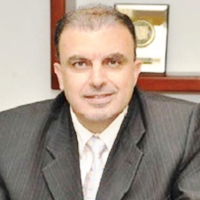Incidence and features of heparin-induced thrombocytopenia in mechanical heart valves and immunologic cardiac diseases
Published on: 5th January, 2022
OCLC Number/Unique Identifier: 9391755940
Background: Heparin-induced thrombocytopenia/thrombosis (HIT/T) is characterized by a fall in platelet count 5-10days after starting heparin therapy and is diagnosed with specific 4-T clinical features and laboratory tests. This complication is relatively common in Cardiothoracic surgery patients. Objective: To evaluate the positive and negative predictive value of various HIT laboratory tests and assess any correlation between HIT, the underlying diagnosis, underlying procedure, and mechanical cardiac devices. Patients and methods: The patient’s medical records were correlated with two laboratories HIT diagnostic tests, the pan-specific screening test with IgG, IgA, and IgM antibodies, followed by HIT specific IgG ELISA. Results: Total n = 80 patients were assessed, 48% (n = 38) were HIT screen pan-specific negative and 50% (n = 40) were HIT pan-specific positive and 2 cases were inconclusive. 17% (n = 14) were both pan-specific and specific HIT IgG ELISA positive. There were 5 atypical cases. One patient had Eosinophilic myocarditis and was HIT ELISA IgG neg. Argatroban was given on clinical grounds with successful recovery. One patient with Sarcoidosis had an aggressive course and received IV Immunoglobulin (IVIG) but succumbed secondary to liver failure. One patient progressed to gut ischemia and had surgical intervention but succumbed. Two patients with mechanical heart valves were on Argatroban but relapsed and responded to IVIG therapy. Conclusion: Our study indicates that 9/16 (> 50%) HIT-positive patients had valve replacement or cardiac devices suggesting that like knee arthroplasty there is a high incidence of HIT in patients with mechanical heart valves and cardiac devices and this warrants further prospective study.
Cervical disc arthroplasty, challenges and indications: case report
Published on: 29th August, 2022
Degenerative changes in the intervertebral discs can cause a significant impact on the biomechanics of the spine this can result in compression of the nerve roots or the spinal cord [1].
Treatment of a Distal Humerus Fracture using an Elbow Hemiarthroplasty
Published on: 14th June, 2023
Elbow hemiarthroplasty (EHA) is a highly effective procedure for treating various elbow joint disorders such as rheumatoid arthritis, osteoarthritis, and fractures involving the articular surface of the distal humerus. It involves replacing the entire distal humerus with a prosthesis and reattaching the supporting soft tissues. The EHA provides significant pain relief, improves joint function, and increases patient satisfaction, with minimal complications that can be easily managed. This case study demonstrates the value of EHA as a viable treatment option for distal humerus fractures in older adults with moderate activity levels, as a superior alternative to osteosynthesis.




